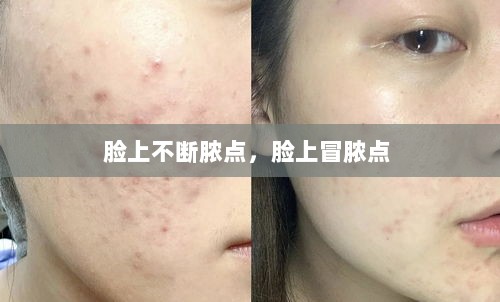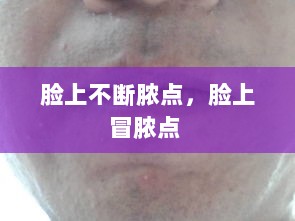<!DOCTYPE html>
Understanding Persistent Pustules on the FaceWhat Are Pustules?
Pustules are a common skin condition characterized by small, pus-filled bumps that can appear on various parts of the body, including the face. They are often red at the base and may be accompanied by pain, itching, or inflammation. Pustules are typically a result of acne, a bacterial infection, or an allergic reaction.
Causes of Persistent Pustules
While pustules can be a temporary condition, some individuals may experience them persistently. Several factors can contribute to the development of persistent pustules on the face:
Acne Vulgaris: This is the most common cause of pustules. It is a chronic skin condition that affects the oil glands at the base of hair follicles.
Bacterial Infections: Staphylococcus bacteria can cause pustules, often as a result of scratching or picking at existing blemishes.
Seborrheic Dermatitis: This is a skin condition that causes flaking and scaling, which can lead to pustules, especially in the oilier areas of the face, such as the nose and forehead.
Perioral Dermatitis: This condition causes redness, swelling, and pustules around the mouth.
Medication Side Effects: Certain medications, such as corticosteroids, can trigger pustules as a side effect.
Stress: Stress can exacerbate acne and other skin conditions, leading to the development of pustules.
Hormonal Changes: Hormonal fluctuations, particularly in women, can lead to the development of pustules.
Diagnosis and Treatment
Diagnosing persistent pustules often involves a physical examination by a dermatologist. They may also ask about your medical history, the duration and severity of your symptoms, and any recent changes in your skincare routine or medication use.
Here are some common treatment options for persistent pustules:
Topical Treatments: Over-the-counter or prescription creams containing ingredients like benzoyl peroxide, salicylic acid, or antibiotics can help reduce inflammation and kill bacteria.
Oral Medications: In some cases, oral antibiotics, birth control pills, or isotretinoin may be prescribed to treat severe or persistent pustules.
Laser Therapy: Laser treatments can be effective for reducing the appearance of pustules and improving skin texture.
Chemical Peels: These can help remove dead skin cells and reduce inflammation, which can help clear up pustules.
Topical Steroids: In some cases, topical steroids may be prescribed to reduce inflammation and redness.
Prevention and Home Care
Preventing pustules involves a combination of good skincare habits and lifestyle changes:
Keep Your Skin Clean: Use a gentle cleanser to wash your face twice a day with warm water.
Exfoliate Regularly: Exfoliating helps remove dead skin cells that can clog pores and lead to pustules.
Avoid Picking: Picking at pustules can worsen the condition and lead to scarring.
Use Non-Comedogenic Products: Choose skincare products that are labeled as non-comedogenic to avoid clogging pores.
Stay Hy















 京ICP备11000001号
京ICP备11000001号
还没有评论,来说两句吧...